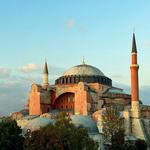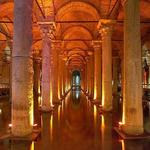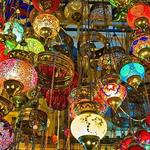Sightseeing

Aya Sofya (Haghia Sophia)
Hagia Sophia was choosen a world heritage site by UNESCO in 1985. Rebuilt by the orders of Emperor Justinian in 537, for 900 years Hagia Sophia had been the center of Orthodox Christianity until 1453 when the city was concurred by Ottomans. 500 years following the conquest of Muslims, it became a jewel for the Muslim world and as the grand mosque of the sultans. In 1935, Hagia Sophia had been converted into a museum of Turkish Republic by the orders of Ataturk, and became one of the most significant monuments not only in Turkey but on earth with its architecture and its historical richness.

Basilica Cistern (Yerebatan Sarniçi)
The Basilica Cistern is one of Istanbul's most surprising tourist attractions. This huge, palace-like underground hall, supported by 336 columns in 12 rows, once stored the imperial water supply for the Byzantine emperors. The project was begun by Constantine the Great but finished by Emperor Justinian in the 6th century. Many of the columns used in construction were recycled from earlier classical structures and feature decorative carvings. The most famous of these are the column bases known as the Medusa stones in the northwest corner with their Medusa head carvings. A visit here is very atmospheric with the columns beautifully lit and the soft, steady trickle of water all around you.

Grand Bazaar (Kapali Çarsi)
For many visitors, sightseeing in Istanbul is as much about shopping as museums and monumental attractions, and the Grand Bazaar is where everyone comes. This massive covered market is basically the world's first shopping mall, taking up a whole city quarter, surrounded by thick walls, between the Nure Osmaniye Mosque and Beyazit Mosque. The Beyazit Mosque (built in 1498-1505) itself occupies the site of Theodosius I's Forum and has architecture inspired by the Aya Sofya. Entrance to the bazaar is through one of 11 gates from where a maze of vaulted-ceiling laneways, lined by shops and stalls selling every Turkish souvenir and handicraft you could imagine, cover the area. The various trades are still mostly segregated into particular sections, which makes browsing easier. Near the bazaar's Divanyolu Caddesi entrance is the Burned Column. This stump (still 40 meters high) of a porphyry column was set up by Constantine the Great in his forum.